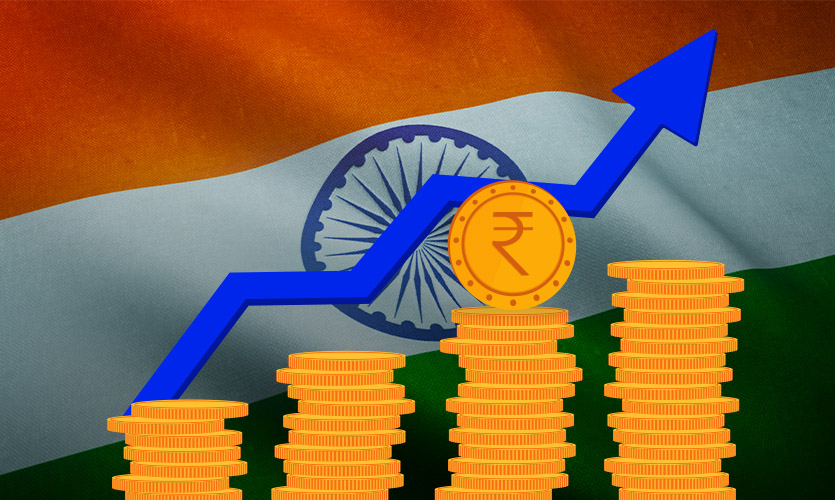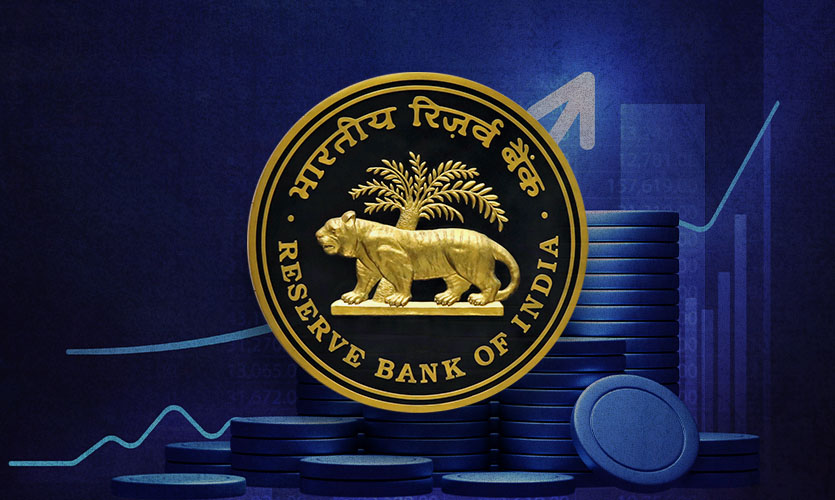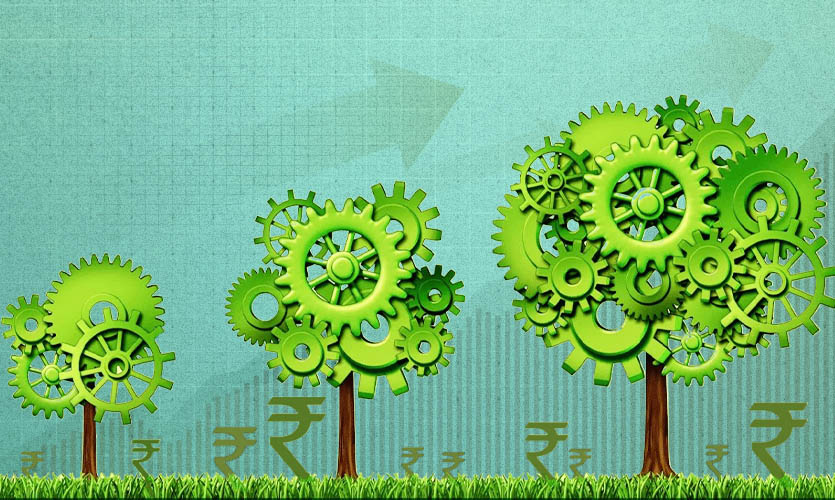On August 15, 2022, India will mark its 75th anniversary of independence. Over the past 75 years, it has had vital turning points and changes that have allowed it to make considerable strides in a number of sectors, including in income levels, growth, literacy, life expectancy, and a wide range of other economic indicators.
India was seemingly unimportant to the world scene up to 1991, due to its sluggish social and economic development, except for being a young country that received help from other countries. But today’s superpowers see India as a powerhouse, and a possible threat. A nation that had to start from scratch only 75 years ago, today boasts the third-largest GDP in the world, in terms of purchasing power parity.
Today, as India enters the global economic scene and works hard every day to establish itself as an emerging global economic power, Pandit Jawaharlal Nehru’s famous words – “A moment comes, which comes but rarely in history, when we step out from the old to the new, when an age ends, and when the soul of a nation, long suppressed, finds utterance” – still ring true.
India’s first Independence Day, observed on August 15, 1947, did not just signal the conclusion of the freedom struggle, but rather the start of the enormous effort of reconstructing a complete nation and its economy.
The most significant turning point in India’s economic history came with its independence in 1947. The nation was left abjectly destitute and deeply demoralised as a result of the Britishers’ many assaults, and deindustrialisation.
India’s economic development received a much-needed boost thanks to Nehru’s plan of keeping the country neutral throughout the Cold War. During the war, both sides gave India a sizable amount of help; in terms of goods and technical support, the Soviet Union and eastern Europe provided almost as much as the United States, Great Britain, and West Germany.
Emergence Of Five-Year Plan
Despite gaining independence in 1947, Indian leaders feared foreign rule would return under the guise of economic control. With the goal of preventing such a situation, India adopted economic independence, and worked towards economic sufficiency, along with five-year plans.
The five-year plans were efforts for national economic and social progress modelled after those in the USSR. First introduced in 1951, India’s first five-year plan focused heavily on transportation, power, price stability, and agriculture. It was based on the Harrod-Domar model, to boost India’s economic development by encouraging savings and investments.
The economy expanded at an annual rate of 3.6 percent, above the target of 2.1 percent, proving that the strategy was successful. The second five-year plan, sometimes referred to as the Mahalanobis Plan in honour of Professor PC Mahalanobis, had a crucial element in rapid industrialisation. In a way, the Mahalanobis Plan laid the foundation for the agenda of Atmanirbhar Bharat.
Boom In Agriculture And Allied Sectors
Lal Bahadur Shastri, who replaced Nehru as prime minister on June 9, 1964, was crucial in igniting the White Revolution and the Green Revolution. He was persuaded that India needed to refocus on agriculture, and give room to private enterprises and foreign capital as a result of the conflict with China, which had resulted in a severe food crisis and rising costs. During 1978–79, the Green Revolution led to a record grain output of 131 million tonnes.
The introduction of the Green Revolution in the 1960s marked a turning point for the nation. In order to develop high-yield variety seeds, it witnessed the use of contemporary technology and techniques, which considerably improved agricultural productivity, and multiplied foodgrain output. India was recognised as one of the top agricultural producers in the world. During his administration, Shastri also concluded that India had the resources and the know-how to start exporting chemical and engineering goods, and agricultural products like tea and rubber, and it has been doing so ever since. From around 48 million tonnes in the 1950s, to a whopping 241 million tonnes in 2017, India’s net grain output surged dramatically. India continues to be the world’s top producer of milk, and one of the biggest producers of rice, wheat, and a variety of fruits and vegetables.
A decade of different economic and development difficulties for India began in the 1960s. Political turmoil was brought on by the simultaneous deaths of Nehru and Shastri, and prices generally increased as a result of depreciation of the rupee during Indira Gandhi’s tenure. In order to increase the amount of credit offered by banks to the agricultural sector, rather than just huge corporations, Indira, the country’s prime minister and finance minister at the time, decided to nationalise the 14 biggest banks in the nation on July 19, 1969.
Economic Diversification
In 1991, PV Narasimha Rao introduced a new industrial policy, not long after assuming office as prime minister, signalling a considerable change from the one introduced in 1956. As a result of the new industrial policy’s emphasis on liberalisation, privatisation, and globalisation, India’s GDP growth rate, foreign direct investment, and per capita income all increased. The Industrial Policy of 1991 constituted a major economic reform, and was introduced to reinvigorate the industrial sector. The policy dismantled the system of industrial licensing, and opened the sector for greater private sector participation and foreign investment.
In terms of real gross value added, manufacturing, construction and electricity, gas and water supply sectors stood at around Rs 401 billion during 1950-51. The sector was valued at around Rs 36,684 billion (2011-12 series), and is estimated to go down by over 11 percent in the 2022 fiscal year. This was a major rise compared to the industries in 2016, which reflected a growth rate of over 9 percent.
In the manufacturing scenario, many sectors gained momentum. The automotive sector grew from just three companies to attract global multinationals, and offer products that meet global quality standards. India has become a major producer of pharmaceuticals, and undertakes research to develop new drugs. In addition to engineering goods, electrical machinery has become a global benchmark as well. The emergence of new sectors such as information technology and telecommunications has transformed the landscape, creating new opportunities such as e-commerce and startups. There is no doubt that India’s IT skills are world-renowned.
There has also been an expansion in conventional service industries such as financial services, tourism and hospitality, and retail, which have changed in a number of ways, adapted to technology, and gained market share. In the services sector, which includes trade, hotels, transport and communications, the real gross value added increased from around Rs 308 billion in 1950-51 to Rs 14,023 billion in 2011-12 (2004-05 series), and is estimated at around Rs 24,711 billion in 2018-19 (2011-12 series). Indian enterprises prospered throughout the ten years of economic liberalisation, and the first ten years of the 21st century saw this shifting trend.
The Planning Commission was replaced with NITI (National Institute for Transforming India) Aayog by the Modi government, in order to bring in a new age of economic advancement. NITI Aayog is an advanced resource centre that serves as the government’s think tank. It has all of the tools, know-how, and expertise required to move quickly, and advance research and innovation.
Fast forward to 2017, Prime Minister Narendra Modi announced the implementation of the Goods & Services Tax in July, following the implementation of the “Make in India” and “Skill India” missions, making India one of the few nations with a tax law that unifies various central and state tax laws, thereby promoting inclusive growth of the country.
Connecting India
The nation made great strides in creating roads to link its cities with the countryside, but since India’s inadequate infrastructure remains a key worry, more roads are needed to get the benefits of expansion to remote communities. From about 0.4 million kms in the 1950s to almost 5.9 million kms after 2016–17, the length of roadways has risen exponentially. The length of state and national roadways has also significantly risen, and the number of registered vehicles has increased as well, from 0.31 million in 1950–1951, to around 295 million in 2019.
India’s power sector has also diversified significantly and made substantial progress since independence. The total energy generated by the hydro, thermal and nuclear sectors increased from only 5.1 billion KWH during 1950-51 to 1,303.5 billion KWH during 2017-18. India is the third-largest electricity producer in the world. As of June 30, 2022, India’s national electric grid had an installed capacity of 403.759 GW. Large hydroelectric facilities are included in the category of renewable power plants, which make up 39.2 percent of the installed capacity.
Read more: India Has Zero Probability Of Slipping Into Crisis Amid The Global Recession, Says Report
Human development indicators in India have also improved significantly. From 18.3 percent in the 1950s, to 52 percent in the 1990s, to 73 percent in 2011, literacy rates have considerably grown. Along with this, other socioeconomic indicators have also seen significant increases, including a growth in the number of accredited educational institutions nationwide, and the gross enrollment ratios in schools. In the field of healthcare, the introduction of advanced and contemporary technology has resulted in a decrease in illness prevalence, and an increase in longevity.
Over the last ten years, India’s economy has experienced significant growth. Its borders have been opened to foreign commerce, foreign direct investment has expanded dramatically, the pace of investment has increased significantly, and its labour force is likely to continue to grow over the next few decades. Although the COVID pandemic set the economy back several years, the government has offered a plan worth Rs 20 lakh crores, or around 10 percent of the GDP, to help the economy overcome the challenges, and move the country closer to truly becoming Atmanirbhar Bharat.
Nevertheless, the nation continues to grow as a behemoth in South Asia, with the potential of other western countries, as it observes Azadi ka Amrit Mahotsav, celebrating its 75th year of independence.










